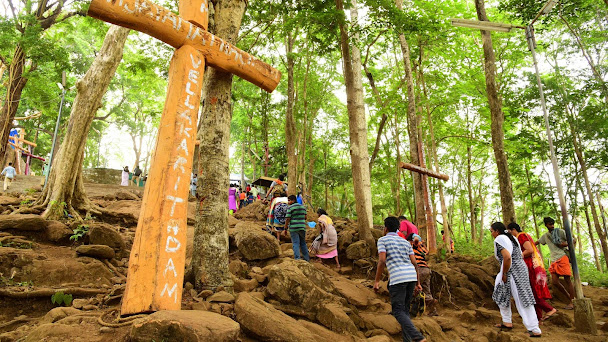Pazhassi Memorial: Remembering the great Kerala Varma
The soil of Wayanad has been grateful to have had the remains of one of the bravest warriors of Kerala called the Lion – Kerala Varma Pazhassiraja. The stories which have been sung from the 18th century till today in the form of ballads glorifies the life of this great king who made it a point to defend his people from the atrocities of the British. Pazhassi’s valour was such that the British government has documented him to be the toughest adversary in any of their colonial adventures. In the town of Mananthavady along the banks of the Kabini river stands the beautiful Pazhassi memorial constructed to provide all the opportunity to remember one of the bravest kings in Kerala history.
The story of Pazhassi is not much found in the annals of history as documents or structures which belonged to him were destroyed. The story was kept alive by the local Thiyyas & Kurumbas in Wayanad. The fact that Pazhassi undertook the rebellion on his own without the support of any other kings, rulers or vassals is quite unique. General Wellesely who famously ended the expedition of Napoleon Bonaparte adopted the methods of guerrilla warfare used by Pazhassi to defeat Napoleon's army in Spain. The British ended the rebellion by killing Pazhassi. Though the British in history were considered to be cruel to their enemies, Pazhassi was considered to be a great man & though he accounted for more killings of British soldiers in the history of colonial rule, the British gave state funeral to him. His body was brought to the place of where the current memorial stands & last rites were conducted as per the Kottayam family traditions. The tomb of Pazhassi is made exactly where the funeral rites were conducted.
The memorial is designed in a very artistic manner and the tomb is built in the form of a circular pit using red mud stones. The memorial is completed with a large mandapam with the walls on the exterior sculpted with many phases of the King’s life along with images of him. The memorial is a place which is maintained with a great sense of cleanliness with a flower garden around which gives one a feel of calmness. The memorial was opened to the public in 1996 & a museum is also constructed next to the memorial to attract more visitors, researchers & historians. The museum has four galleries each based on the life of Kerala Varma. The Pazhassi Gallery is where one can find all the items used by the king along with his enigmatic sword, handy weapons, writing tools & other such articles. The people of the forests who considered Pazhassi their king even after all his royalty was lost are celebrated in the Tribal museum. The articles used by them, weapons of the Kuruchia bowmen & women, utensils etc are displayed here. The Heritage museum is a great addition as it highlights the untold history of the people of these parts. There is also a numismatics museum which holds many manuscripts, stamps, coins etc from the time of Pazhassi. The museum is also a place for all to know Pazhassi better as the storyline is well documented for all to understand each incident that happened, the betrayal, fight with the British, friendships, loyalties, death & destruction of the lineage.
Kerala Varma was instrumental in keeping the powerful Mysore empire from annexing the Kottayam rule by engaging in warfare with both Hyder Ali & later his son Tipu Sultan. Pazhassi raja was a great exponent of guerrilla warfare which was quite a strategy as he successfully waged a war with both the Mysore empire & later with the British who had better supply of artillery & guns. His strength was the landscape & his aura over the locals. Pazhassi was not against the British earlier as he sided with the them to keep the unruly invasions of the Mysore soldiers but the situation changed after the British stopped recognising Pazhassi as the true king of Kottayam & exiled him to the forests. The war continued for around 12 years till the death of Kerala Varma. The British considered themselves superior to Pazhassi & his tribal men but what they lacked was the expertise of guerrilla warfare of which the tribal & their king was an expert. The idea was to stop supplies along the forests in time of battle & this drastically affected the British who lost many of their soldiers in constant ambushes. The British tried to capture Pazhassi at the Telicherry fort but their plans fell flat when Pazhassi’s men outnumbered the British & the Kottayam kings’ men put together. The strength of Pazhassi were his men & closest aides. Pazhassi was able to keep off the British for most of the 12 years but the death of Tipu Sultan in Mysore – Anglo reduced his clout & by the start of 1805 it became difficult to keep the British away. The plot to capture & kill their greatest enemy could only be attained by the British using traitors & this was achieved when a spy by the name Pazhayaveedan Chandu killed the aides of Pazhassi by deceit leaving him alone. The death of Pazhassi was celebrated by the British who destroyed the palace & captured his queen who later committed suicide.
The story of Pazhassi is one that brings out the best in Kerala history which valued the goodwill of its people even in times of difficulties. The memorial is certainly a great addition to Kerala & a must visit for all.
To read more about the life & events in life of Pazhassi Raja Kerala Varma refer our blog: Legacy of Pazhassiraja Kerala Varma: The Lion of Kerala.
You can also listen to story of Pazhassiraja on the HEARITAGE BLOGGER podcast in SPOTIFY




Comments
Post a Comment